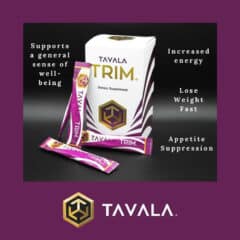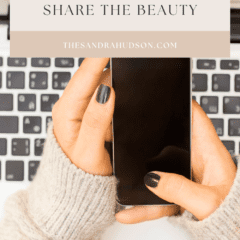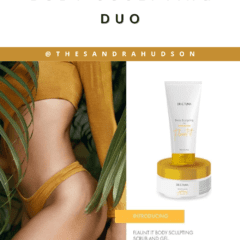If you haven’t heard of Essential oils by now, you must be living under a rock. More and more people are branching out into Essential oil usage these days. Essential oils, the fragrant concentrated plant extracts that are brimming with health benefits, a drop or two of which can offer emotional, physical, and even spiritual benefits. If you want to switch to essential oils to support a more natural and holistic lifestyle, but don’t know where to begin, I am about to share with you the safest ways to use them to gain maximum benefits.
What are essential oils:
Essential oils are concentrated natural extracts from plants. Different essential oils are extracted from different parts of the plants: leaves, stems, flowers, roots, resin, etc. Rose essential oil comes from the flowers, frankincense is extracted from the resin of Boswellia trees, tea tree from the melaleuca leaves, and sweet orange oil from the fruit rinds.
Essential oils have distinct properties which help determine their various application. Lavender, for example, is calming and can help induce sleep. These potent and concentrated extracts offer therapeutic benefits. They are widely used in a number of commercial skin and hair care products. Many establishments also diffuse essential oils to promote a calming and relaxing environment. At home, they can be safely used to freshen the house, promote sleep, clean surfaces, treat minor cuts and bites, relieve an upset tummy, etc. Here are some simple and safe ways to use these oils:
Aromatic Use
When you open an essential oil bottle, the first thing that you will notice is the scent. Being concentrated, they have strong scents. Each oil has its own set of unique aromatic compounds, and inhaling its scent has an immediate effect on the body and mind. By stimulating the smell receptors, essential oils send chemical signals to the brain, which, in turn, affects the body emotionally, physically and mentally.
How to Use:
The easiest way to enjoy the aromatic benefits is to simply smell the essential oil by popping open the bottle. You can also drop a few drops in your hands, rub your palms together, cup them close to your nose, and inhale the scent deeply.
You can enjoy their calming scent by diffusing the oils in an aromatherapy diffuser designed specifically for this purpose. I love this REVIVE Ultrasonic Diffuser. It lasts for up to 10 hours with automatic shut-off for home & office safety. Plus, it is budget-friendly.
Top tips:
– Add a drop or two of lavender essential oil to a cotton ball and leave it near your pillow
– Use with dryer balls or sheets during the laundry’s drying cycle
– Add to a spray bottle containing water and a little witch hazel and spritz all around the room
Topical:
Essential oils are extremely popular ingredients in commercial and DIY recipes for skin and hair care. This is because they have a low molecular weight, which means they are readily absorbed by the skin. The beneficial components of the oil sink into the skin and are carried around in the bloodstream. What’s even more interesting is some essential oils are processed and excreted by the body within a day. This suggests that we can reap maximum benefits from essential oils by using them topically. However, there are a few Do’s and Don’ts that need to be followed.
How to Use:
As we mentioned earlier, essential oils (EO) are extremely concentrated and it is important to check which essential oils can be applied neat (directly on to your skin) and which ones need to be diluted (mixed with carrier oil). Carrier oils like coconut, almond, jojoba, etc. are all good options. Also, pay attention to dilution ratios; for beginners, 1 percent dilution is recommended, i.e. six drops of EO to an ounce of carrier oil.
The best places to apply the mix would be the nape, forehead, temples, chest, abdomen, and the soles of the feet. Avoid using on sensitive areas like the eyes, under eyes, inner ears.
Do a Patch Test:
The best way to check for sensitivity is to do a patch test. Just wash and dry your forearm, then apply the essential oil blend to your inner wrist. Leave for 24 hours. Check for irritation or any other adverse reactions.
Top tips:
– Add essential oils like geranium and frankincense to your skin care products like face creams and body lotions
– Make your own nourishing hair conditioner by mixing rosemary essential oil with coconut oil
– Mix essential oils like lavender and peppermint with bath salts or milk, and add this to your bath water for a relaxing soak
Internal:
Internal use of essential oils can refer to placing a drop or two of essential oils directly into the mouth, mixing oils into a beverage, or taking a capsule containing essential oils. Not all essential oils are approved for internal use, so be sure to read the safety guidelines of the particular oil before ingesting. It is recommended to start with one drop of essential oil at a time, and increase to up to three drops to achieve the desired effects. Do not exceed 18 drops daily, divided into 1-3 drop doses. Particular dosage requirements vary from person to person and are dependent on age, weight, and general health. You should always start with the lowest dose possible, and only increase dosage if necessary.
How to use:
Essential oils can replace certain herbs and spices in recipes; however, since they are highly concentrated, a small amount will go a long way. Some essential oils are very strong and potent; it’s best to dip a toothpick in these oils and add to the recipe instead of using drops. You can also add essential oils to a veggie capsule for more targeted applications.
Top Tips:
– Oregano and basil essential oils can replace the herbs in recipes
– Start the day with a detoxifying glass of lemon water by adding a drop of lemon essential oil to it
– Enjoy a refreshing cup of tea in the morning by adding a drop of peppermint essential oil to it
Using essential oils on children
The recommended dilution for topical use on children is 8 drops of carrier oil to one drop of essential oil. If no irritation occurs, you can increase this to 5 drops of carrier oil to one drop of essential oil. Some essential oils should NEVER be used on children under the age of 6 because they can cause respiratory distress, like peppermint oil.
Using essential oils while pregnant or taking prescription medications
Although some essential oils are approved for use during pregnancy, many mothers-to-be choose to avoid the use of essential oils altogether. While some essential oils should be avoided during pregnancy, many are still safe for topical and aromatic use. If you are taking a prescription medication, internal use of some essential oils may negatively interact with your medication. If you are pregnant, breastfeeding, taking a prescription medication or attempting to treat a chronic condition with essential oils, you should always consult a medical professional before use.
Promote general wellbeing – naturally!
When used properly, essential oils are a valuable addition to your daily routine. They can be diffused throughout your home to ease stress and anxious feelings, applied topically to alleviate muscle pain and reduce inflammation, and even taken internally to boost the immune system! By following proper safety precautions, you can improve your overall wellbeing in an easy, natural way.
If you are looking for high-quality essential oils that are more affordable, I have been using Revive Essential Oils. REVIVE is not a MLM or Direct Sales company. They eliminate the cost of the middleman, and pass the savings on to you as the consumer. They are able to offer the same quality oils for much less. You also get the benefits of free shipping and great customer service to those same quality oils. I have converted and love it. You can even use the code sandrarevive10 and get 10% off your first order!! See what oils and blends compare to your existing oils here.



